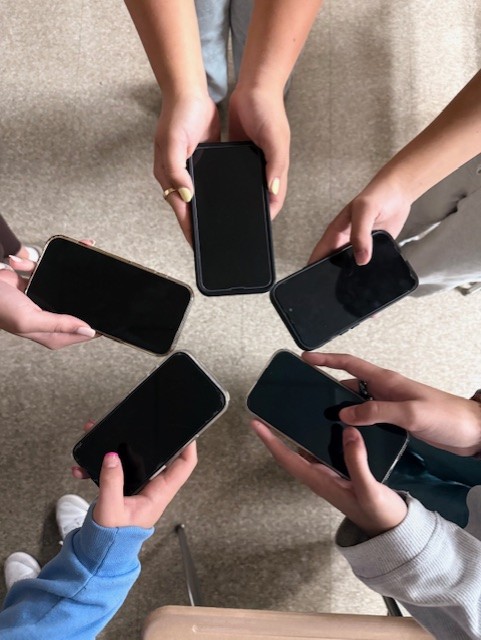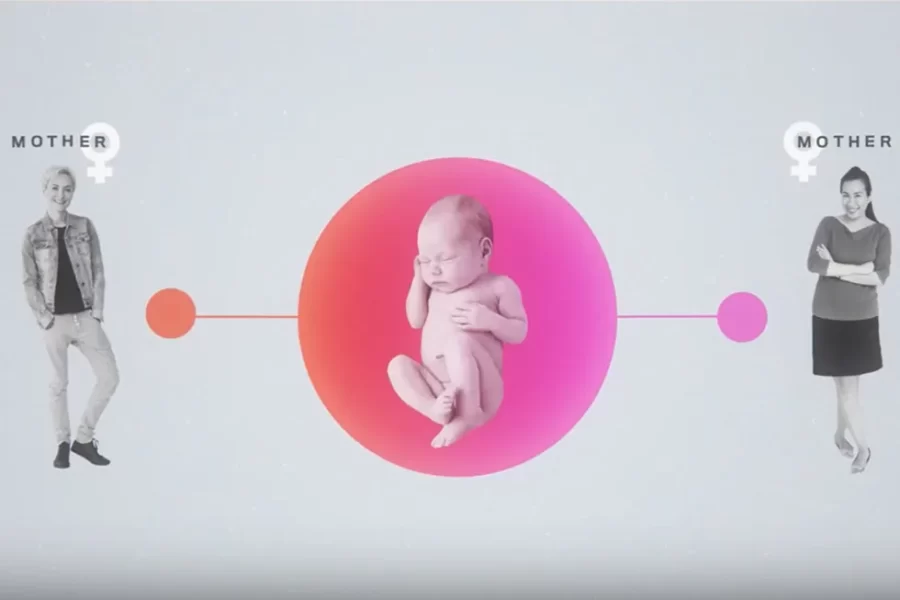In Vitro Gametogenesis: A New Method of Reproduction
Photo courtesy of leaps.org. This picture shows how when using IVG, the baby could have DNA from both parents instead of one parent and a donor!
June 2, 2023
Since 1978, in vitro fertilization (IVF) has been used. This method of reproduction allows for same-sex couples to have children as well as help heterosexual couples who are having fertility problems. With IVF, eggs are removed from the ovaries and fertilized with sperm in a laboratory. The embryo is then returned to the womb to develop naturally.
However, though this process works great for a heterosexual couple as they have both the sperm and egg cells, it presents a bit of a problem for same-sex couples: the offspring will only be biologically related to one parent. Enter in vitro gametogenesis (IVG). This is a new and exploratory process that has only been tested on mice at this point; however, scientists are hoping it will be approved for humans soon.
In IVG, cells are taken from pretty much any tissue or organ in the adult human body, but specifically skin or blood cells, and are “reverse engineered into becoming induced pluripotent stem cells,” says STAT News. These induced pluripotent stem cells are essentially cells that have been “genetically reprogrammed” into an embryonic state, or ‘stage 1.’ These cells then have the ability to be further transformed into anything from muscle tissue to kidney cells to sperm and egg cells.
Basically, a patient would give a skin biopsy, and the sample would be sent to a lab. From there, the collected cells would be bioengineered into sperm or egg cells and then the rest would look a lot like IVF. An egg would be fertilized and then implanted into the patient when the time comes.
As of right now it has only been tested on mice, but nonetheless extremely successfully. For example, in 2016, scientists at the Tokyo University of Agriculture were able to help a female mouse reproduce 26 pups using egg cells made from her skin cells. Furthermore, in 2018, Japanese scientists were able to create immature human cells using those induced pluripotent stem cells as mentioned before.
This new method of fertilization opens up entire new doors for both same-sex couples as well as single people who want to have children that are biologically their own. However, it also opens up an entirely new door to ethical questions.
Similarly to when IVF was first introduced in the ‘70s, people are wondering about the ethical guidelines of using IVG. Specifically, the ability to choose and change DNA sequences, making a so-called “designer-baby.” This allows the ability to erase certain diseases and disorders from future generations, something that should also be called into question.
Additionally, there is no way of knowing the full risks of using this method, both for the patient as well as the offspring it creates. However, ethical questions aside, “in vitro gametogenesis could be life-changing for the millions who need another avenue in order to create a biological family,” says Freethink.




































